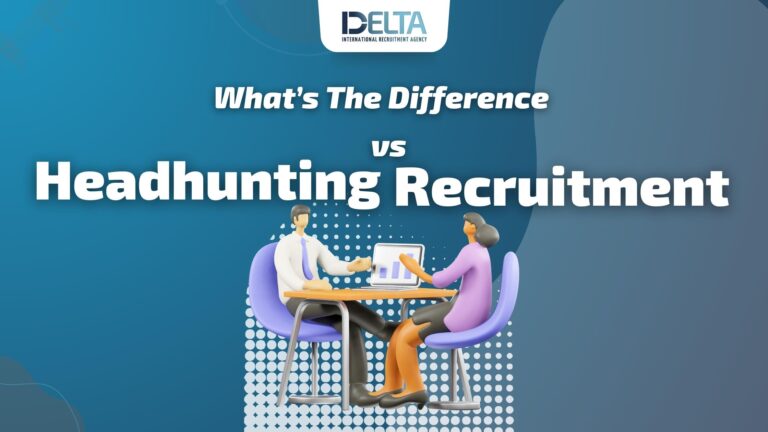Many people are torn between heading hunting (looking for a new job) and recruitment (offering your services to potential employers). What’s the difference?
Headhunting is typically used to fill management positions, while Saudi recruitment experts is used to fill all other positions. Recruitment usually focuses on proactive advertising, highlighting the employer’s achievements and looking for qualified candidates who meet the company’s needs. Headhunting usually focuses on passive interviewing, in which the interviewer tries to identify a candidate from a pool of prospects.
There are pros and cons to both methods. Headhunting can be more proactive because it allows you to target specific job openings. Recruitment can be more effective when trying to attract a certain type of candidate or when the company is in need of a particular skill set. Ultimately, it comes down to what you feel most comfortable doing.
What is Headhunting?
Headhunting, also known as executive search, is a specialized method of finding and recruiting highly skilled individuals for top-level positions in a company.
Understanding Headhunting through an Example:
Illustrative Scenario: Tech Innovator and XYZ Corporation
Imagine a tech innovator who played a crucial role in transforming a startup into a market leader.
How They Got the Job: XYZ Corporation actively sought out this innovator for a key leadership role.
Background: Prior to joining XYZ Corporation, this tech innovator was at the forefront of a startup’s success, contributing significantly to its growth and technological advancements.
Why XYZ Corporation Chose Them: Through headhunting, XYZ Corporation identified the innovator’s strategic vision and technological expertise as valuable assets for their company’s future. They believed this individual would bring innovation and leadership to their team.
Key Differences from Recruitment:
- Exclusive Process: Headhunting focuses on finding exceptional candidates for top management roles, typically recruiting one or two key executives. It is an exclusive and targeted process.
- Limited Scale: Unlike recruitment, which involves hiring on a larger scale, headhunting is limited to a select few positions at the highest levels of an organization.
- Proactive Search: In headhunting, employers actively search for suitable candidates, regardless of whether these candidates are actively looking for a new job. It is a proactive approach.
- Top-Level Executives: Headhunting is specifically tailored for hiring top executives such as chairpersons, HR heads, members of the board of directors, and other high-ranking positions within the organization.
In summary, headhunting is a specialized and targeted process designed to identify and recruit top-tier talent for key leadership roles within a company.
Image Source: talentlyft
How Headhunting Works?
Stage 1: Determining the Need
When a company needs a new high-level executive, the CEO or leader quietly talks to the headhunting team.
Stage 2: Identifying Necessary Skills and Experience
Headhunters work with the executive and hiring teams to figure out what skills and experience the new employee should have. They create an official job description to guide their search.
Stage 3: Approaching Passive Candidates
Headhunters use different methods, like professional connections and studying competitors, to find potential candidates who aren’t actively looking for a job. They approach these people to see if they’re interested.
Stage 4: Considering Active Candidates
At the same time, the headhunting team also looks at people actively searching for a job to find qualified candidates.
Stage 5: Reviewing and Vetting
Once they have a bunch of candidates, the headhunters team up with the company’s hiring folks to review and check them out. They pick a few outstanding candidates to move on to the next stages.
Stage 6: Interviewing and Assessing
The shortlisted candidates go through interviews with different people from the company. After all the interviews, the team decides on the best fit for the open executive position.
Stage 7: Extending the Job Offer
Once the decision is made, the company offers the job to the chosen person, negotiates details if needed, and completes the hiring process.
Image Source: aihr.com
What does recruitment involve?
Recruitment is like a big process of finding and choosing the right people for job openings in a company. It involves looking at lots of job seekers, talking to them, and picking the ones who are the best fit for the job. Recruiters, either on their own or in a team with hiring managers, play the important role of connecting the company with people looking for jobs. They help fill up the many job openings with the right candidates.
Here is the complete guide on Difference Between: HR, Recruitment and Staffing Services
How is Headhunting Different from Recruitment?
Headhunting is a really specialized job, while recruiting is more everyday. A company’s own team or outside agencies can do recruiting, but headhunting needs the company’s big shots, like the board of directors and top managers, to be actively involved.
Now, let’s check out the table below to see how headhunting and recruiting are different:
When it comes to finding the right people for job positions, two main approaches stand out: Headhunting and Recruitment. Let’s break down their differences in a simpler way:
Candidates:
- Headhunting: Headhunters are like talent detectives. They search for top-level candidates who aren’t actively looking for a job. It’s a tough job because they need to find the perfect match for high-level roles.
- Recruitment: Recruiters, on the other hand, focus on active job seekers. They have a bunch of potential candidates in their database and often use job portals to gather more applications.
Process:
- Headhunting: Imagine a company needs a specific high-level executive. Headhunters get into action, actively searching the market for the best candidate, whether they are job hunting or not.
- Recruitment: Recruiters usually have a stash of candidates in their database. They may also post job openings on portals to attract applicants.
Position:
- Headhunting: It’s the go-to strategy for filling those top-tier, C-suite positions. You won’t often see headhunting for lower-level roles.
- Recruitment: This strategy is more versatile, used to fill the majority of open positions. Some companies even use it for executive-level roles.
Method:
- Headhunting: Headhunters in KSA are proactive detectives. They actively approach potential candidates, using various methods like professional connections and checking out competitors.
- Recruitment: Recruiters are more like a magnet; candidates often come to them. They use tools like online job portals to attract applications.
Cost:
- Headhunting: Finding the perfect match is costly. Headhunters invest time and effort to identify and approach passive candidates.
- Recruitment: It’s relatively less expensive since recruiters focus on candidates who are actively looking for a job.
Roles:
- Headhunting: Headhunters zero in on a small number of specific, hard-to-fill executive roles. Quality over quantity.
- Recruitment: Recruiters have a big job. They need to fill a large number of open roles, spanning various levels within the company.
Time:
- Headhunting: Because high-level roles are hard to fill, headhunters take their time on each position to ensure they get the right match.
- Recruitment: Recruiters, dealing with a large number of roles, focus on quantity. They spend less time on each candidate and quickly move on to the next.
In a nutshell, headhunting is like a targeted mission for high-level roles, while recruitment is the all-encompassing strategy for filling numerous positions across the board.
Summering it
Both headhunters and recruiters are important for finding and hiring the right employees. However, they have different jobs.
Recruiters, whether from the company or an agency, handle regular hiring for various positions. On the other hand, headhunting, which is for executive-level jobs, needs the company’s top directors to be actively involved.
Understanding this difference is crucial for companies as they navigate the hiring process.
Tips for Employers: Headhunting vs Recruitment: What’s The Difference




